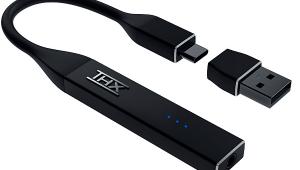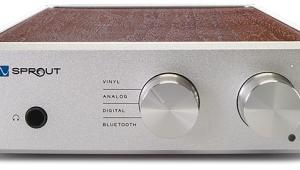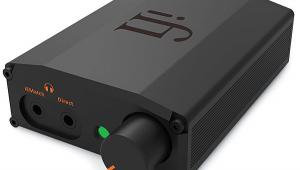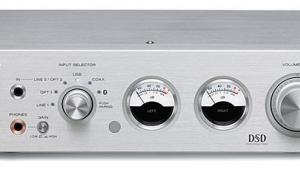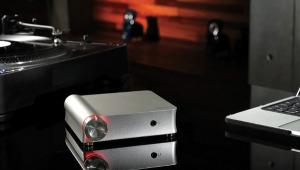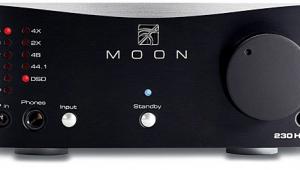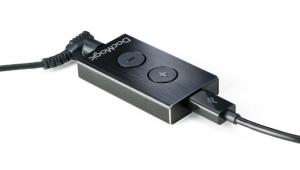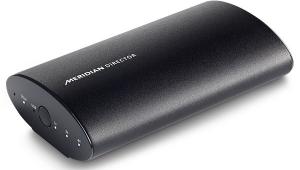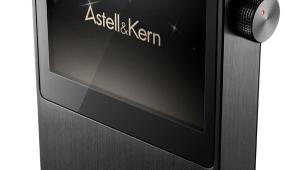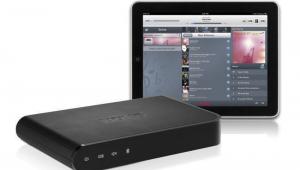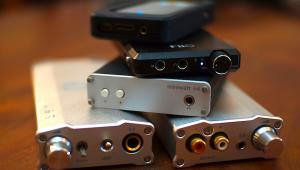AudioQuest Dragonfly Cobalt Headphone Amplifier/DAC Review
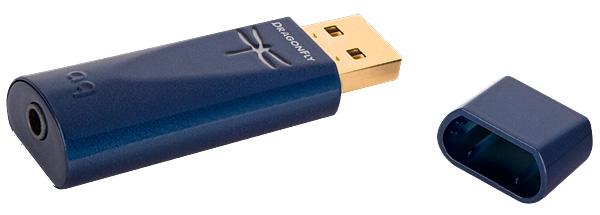
AT A GLANCE
Plus
Outstanding sound from compact solution
Ample dynamics for a broad range of headphones
Minus
96kHz maximum PCM sampling rate
Requires extra-cost adapter for use with Apple Lightning devices
THE VERDICT
AudioQuest's Headphone amp/DAC-on-a-stick offers sonics to rival standard-size components.
Listeners tend to consider an external digital-to-analog converter as either completely unnecessary or absolutely essential. If you believe bits is bits, you're probably perfectly happy with the converter inside your smartphone, tablet, or computer. If you don't, you likely have auditioned many a converter component with a seriously gimlet ear. Both tribes, however, can agree that the headphone amps in most smartphones, tablets, laptops, and desktops leave a lot to be desired when it comes to peak output, dynamics, and inherent sonic quality.
AudioQuest, a firm that made its bones selling high-end cables to folks committed to the differences therein, is a natural to provide a similar set of options in the portable DAC space. And indeed, its DragonFly line of miniature USB-Headphone amp/DACs has been so successful that the firm has added a third, the $299 DragonFly Cobalt, to the existing Black ($99) and Red ($199) versions. With a couple of distinctions, the new Cobalt follows the Red with a 24/96-capable ESS Sabre micro-DAC circuit and a relatively high-output headphone amp micro'd into a housing that looks like a nicely finished USB thumb drive. It has a USB type-A male connector on one end, and a standard stereo mini-jack to connect headphones or a cable to a preamp or other "B-chain" component, on the other.
Those distinctions? The Cobalt uses a newer ESS micro DAC chip with a "slow-rolloff" minimum phase digital filter that AudioQuest claims to deliver more natural sound (both the Black and Red versions use fast-rolloff filters). The Cobalt retains the Red's headphone amp (also ESS) but has a new micro-controller chip that's said to reduce power consumption and increase processing speed.
Setting up AudioQuest's DAC involves merely plugging it into a USB port. I used my older iMac, which conveniently (not!) put the Cobalt on the back with its jack facing away. (Fearing golden-ear backlash, I elected not to use a USB-extension cable.) The Mac's OSX (10.13.4) software found it without difficulty, and voila! Music. (Because the Cobalt relies on the host to downsample files above 96kHz, Windows users don't need to download a driver.) Pairing the DAC with a portable like a smartphone requires an adapter. AudioQuest includes its new USB-C DragonTail adaptor cable that connects DragonFly to all USB-C-enabled Apple and Android gear, but iPhones will require an Apple adapter such as the $39 Camera Adapter 3 that AudioQuest recommends.
Ergonomics? The Cobalt doesn't have any beyond a sexy illuminated DragonFly logo that lights up different colors to indicate 44.1, 48, 88.2, and 96kHz sample rates and glows a stylish purple when an MQA stream is detected. (Note that as an MQA renderer, the Cobalt can "unfold" an MQA-encoded file to deliver resolutions beyond 96kHz when paired with compatible playback software like Tidal.) Yet I still managed one complaint: the cap that covers the Cobalt's USB end for purse or pocket travel is asymmetrical, but with no indication of front or back. So, when you put it on backwards—a 50/50 proposition—it's not flush. Oh, the horror!
Performance
Did the Cobalt sound better than the headphone output of an iMac? Yes—even a contrarian skeptic like myself can easily concede that point. Its sound was obviously more open, quiet, devoid of any slightly grainy or "fizzy" tinge, and effortlessly dynamic. And the bass was just all-around better: deeper, tighter, more timbral—more everything.
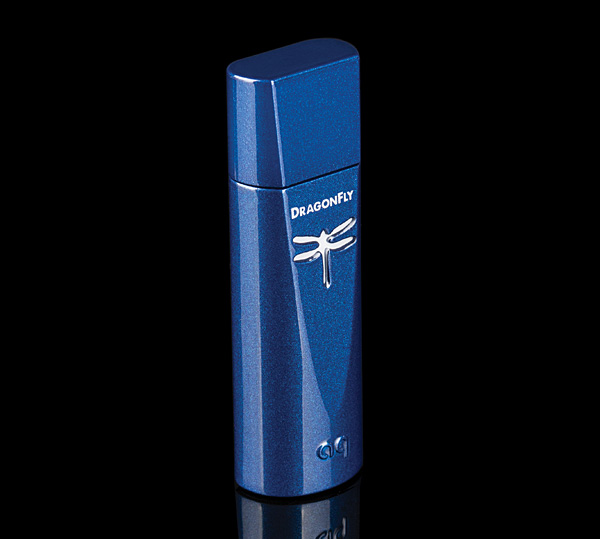
Did the Cobalt sound better than either of the outboard, big-component Parasound and Primare DACs at my disposal? Not via my headphones, at least, but it did sound every bit as good as either and I noted no repeatable sonic signatures among the three. Does it sound better than high-dollar outboard-DAC X, Y, or Z? I have no idea, but would wager that real differences, if any, would be vanishingly tiny.
I did most of my listening via Tidal and Qobuz, for their easy access to streaming high-res files, including MQA-encoded ones in the case of Tidal. I rotated among my three headphones: a fairly low-output, medium-impedance HiFiMan planar set; a moderately higher-output, somewhat lower-impedance NAD/Viso set; and my ancient Sony MDRV6 reference, a still lower-Z and higher-O option.
The Cobalt had enough oomph to drive both the Sony and the Viso cans far louder than I'd ever ask, even, I think, on a noisy subway. It also drove the HiFiMans loud enough for the most serious at-home listening, though the bottom end at extreme levels got a little tubby, presumably due to headphone-amp "sag." On a really noisy public conveyance this combo might not quite cut it for critical listeners—but I'd think twice about wearing my eminently snatch-able HFMs on the subway, anyway.
The HiFiMans are the most resolving headphones of the trio, and with about two-thirds volume level from the Cobalt they were a sonic delight. A classic studio-jazz track like "Blue Waters" from the Kenny Barron Quintet (Tidal MQA stream) featured superb hi-hat sound that was finely detailed in both timbre and dynamics, with no hint of grain or tizz. It also lacked nothing when it came to dynamic range, standup-bass "dig" and resonance, or soundstage—I heard wide, rock-stable hole-in-the-middle headphone sound. Even the painfully bright Sony cans benefited from the Cobalt's open, sweet top end.
The little Cobalt accepted every file I fed it, including MP3s, AIFFs, WAVs, and FLACs. Like some other portable DACs, the DragonFly line does not natively decode DSD files, but most (nearly all, in fact) software players convert these to PCM on the fly anyway, so no biggie there. On the other hand, AudioQuest's website boldly states, "Plays all music files: MP3 to MQA and High-Res."
Conclusion
The Cobalt perhaps lacks the last iota of dynamic ceiling as compared to some megabuck, big-component outboard headphone amp/DACs, but then again, maybe not. Either way, I was very impressed with just how "high-end" the best hi-res music sounded via AudioQuest's pocket wonder. Price no object, can you buy better DAC-based headphone sound? Probably. Can you do so for less than two or three times the Cobalt's $299 price? Doubtful. Very doubtful.

